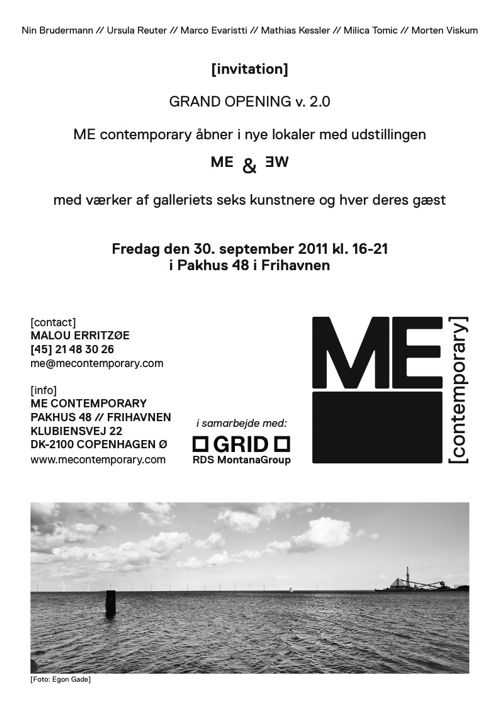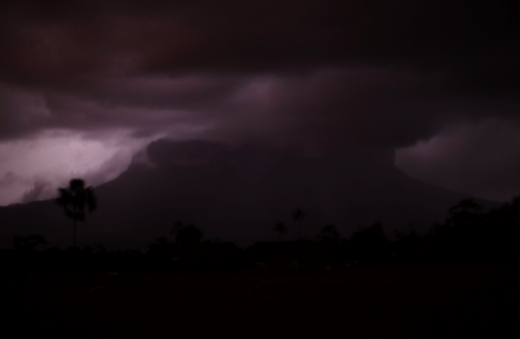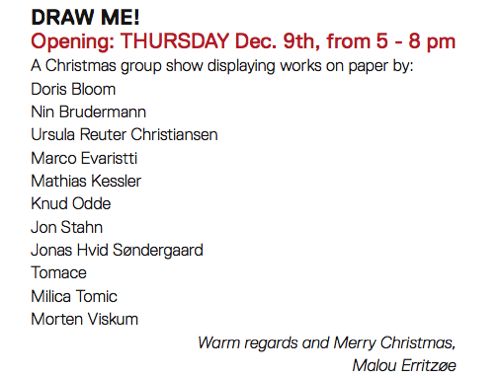
Tag: Mathias Kessler
Draw Me!
Mathias Kessler

At his first solo show at ME Contemporary, Mathias Kessler (Austria) introduces his audience to a skull overgrown with coral, a sound installation that brings one to distant – but man-invaded – places, and crisp photos that present Nature as both remote and grand, accessible and near.
In I’ll Survive, Kessler reflects on a series of natural disasters and the role of the media in presenting images of global warming as a result of Man´s presence and exploitation of Nature´s resources. In continuation hereto the artist poses the question, how Nature reacts to our century-long exploitation along with our detachment from it? Does the exploitation effectively work as a boomerang, which is now on its way back in our faces?
Working with these themes, the artist was intrigued by the effects of highly publicized climate “hotspots” in the media, such as disaster tourism (people travelling to see the disappearing Nature: the melting icebergs of Greenland and the vanishing rain forests of South America) as well as the use of climate and the preservation of Nature in the marketing of commercial products. This hype has led him further into the investigation of how Nature is represented, and he has used these spots as starting point for his own representations and stories about the role of Nature in society today.
Over the years, Kessler has travelled to and collected impressions from these geographically diverse sites, and by creating a unique combination of multiple expressions, which in itself constitutes a whole, has managed to create a series which presents to us various forms of Nature. The exhibition incorporates a variety of media – audio, video, and razor-sharp photos taken during the expeditions.
Bringing into mind the thesis of American land art artist Robert Smithson, that Nature is a fantasy of the 18th century, the artist has installed a sound piece at the gallery entrance, with recordings from an expedition to the top of the Tepuis mountain in Venezuela. Thus deprived of the visual, which instead is replaced by a strobe simulating a thunder storm, a fantasy of Nature is created.
While photographing in Venezuela, Kessler recorded a video showing native porters transporting his technical equipment to the location of the shoot. In this way, the artist repeats media-known images of Western civilization’s use of the natives in remote areas, bringing our encounter with Nature and the simultaneous attempt to colonize it, together.
In studying Man´s expeditions in order to map and conquer remote areas the coral grown skull stands as a comment to these adventurers: either they returned to honour and recognition or they disappeared during their search.
Kessler’s investigation revolves around our impact on Nature and that impact´s effect on our society, ultimately letting the question of how the individual functions – and survives – in this field, remain an open one.
“Not For Sale”
ME contemporary will present its second group show, titled ”Not For Sale.’ Each of the six artists featured in the gallery this year has been invited to exhibit a piece from his/her own collection, which as the title of the show implies, is not for sale.
In a time of unstable global economy and shaky markets whose success or downfall greatly affect the art world, ME contemporary’s newest exhibition looks introspectively at this relationship and challenges the traditional role of the art gallery as a commercial space. The exhibition will be on view through July 3.
‘Not For Sale’ poses the question: ‘What makes a piece of art off limit?’ To the artist, the decision is often of a personal nature – a strong emotional connection to the work. To the market, gallery and collector, the experience of desiring a work of art that is off-limits can be both highly exciting and incredibly frustrating. Utilizing the traditional art-historical tool of story-telling, ‘Not For Sale’ explores some of these reasons by exhibiting the artwork alongside a narrative inspired by each artist.
The displayed works in ‘Not For Sale’ range from an early piece by Ursula Reuter Christiansen upon which her teacher, Joseph Beuys placed the finishing touches, to an intimate music video recorded by Nin Brudermann to her husband, during her stay aboard an ice breaker in connection with the project, ’12 O’clock in London.’ Also exhibited is Morten Viskum’s first painting, created by ‘the hand that would not stop painting,’ and a work from Marco Evaristti’s ‘Crash’ project from 1995, painted with the blood of Bangkok traffic accident victims. Artist Milica Tomic’s most prized pieces are empty sketchbooks whose pages, filled with drawings of victims of the Srebrenica Massacre, remained with the relatives who described their loved ones from memory. Mathias Kessler shows a photograph of an amorphous shape surrounded by white. Upon closer inspection, the amorphous form reveals itself as an obese body mired in thick rice pudding. Each work is followed by a story of the work’s origins and an explanation why the specific piece is not up for sale. In this way, the exhibition also provides a glimpse into the artists’ psyches – into their way of working and how they view their own art.

